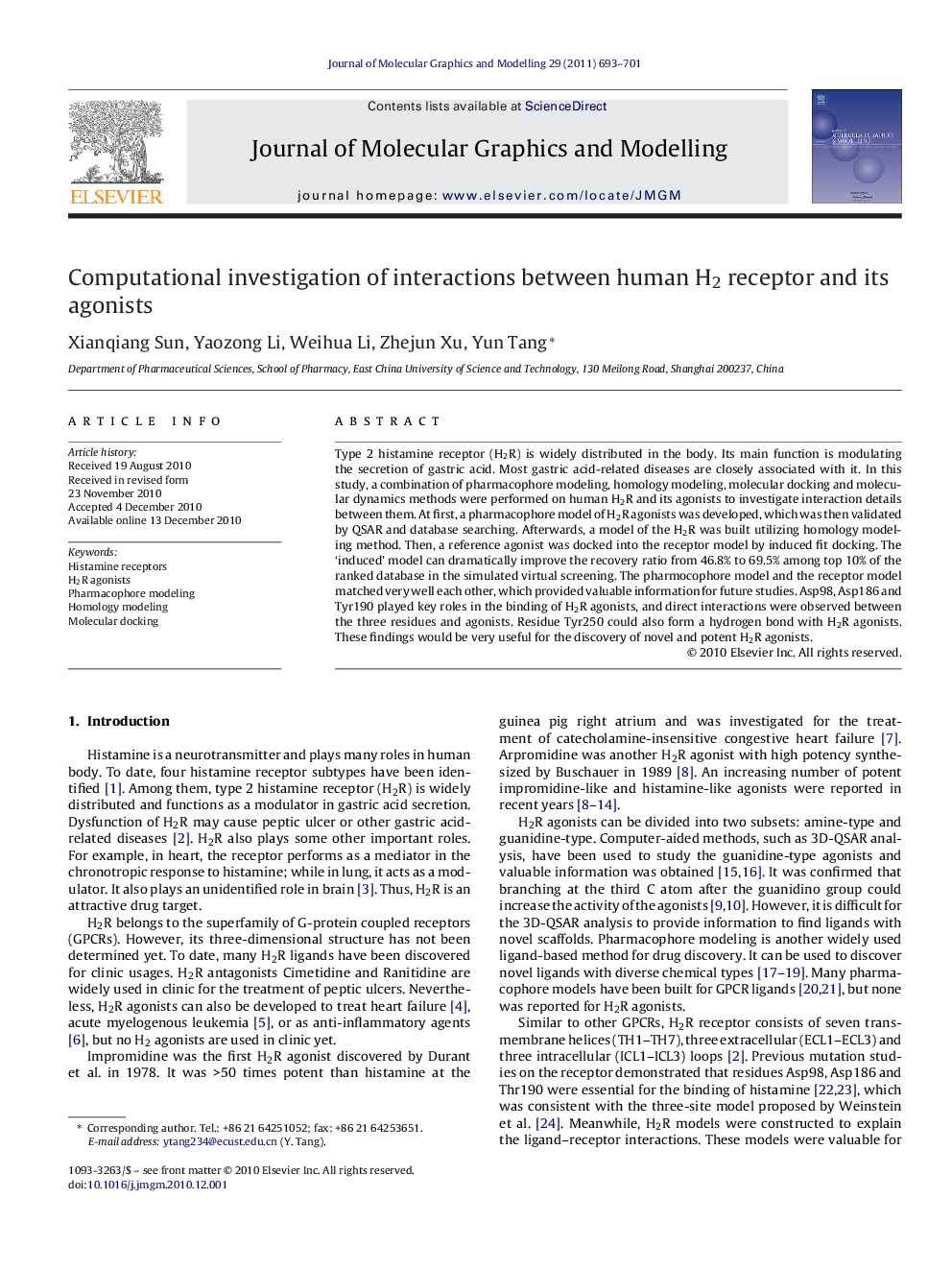| Article ID | Journal | Published Year | Pages | File Type |
|---|---|---|---|---|
| 443532 | Journal of Molecular Graphics and Modelling | 2011 | 9 Pages |
Type 2 histamine receptor (H2R) is widely distributed in the body. Its main function is modulating the secretion of gastric acid. Most gastric acid-related diseases are closely associated with it. In this study, a combination of pharmacophore modeling, homology modeling, molecular docking and molecular dynamics methods were performed on human H2R and its agonists to investigate interaction details between them. At first, a pharmacophore model of H2R agonists was developed, which was then validated by QSAR and database searching. Afterwards, a model of the H2R was built utilizing homology modeling method. Then, a reference agonist was docked into the receptor model by induced fit docking. The ‘induced’ model can dramatically improve the recovery ratio from 46.8% to 69.5% among top 10% of the ranked database in the simulated virtual screening. The pharmocophore model and the receptor model matched very well each other, which provided valuable information for future studies. Asp98, Asp186 and Tyr190 played key roles in the binding of H2R agonists, and direct interactions were observed between the three residues and agonists. Residue Tyr250 could also form a hydrogen bond with H2R agonists. These findings would be very useful for the discovery of novel and potent H2R agonists.
Graphical abstractFigure optionsDownload full-size imageDownload high-quality image (169 K)Download as PowerPoint slideResearch highlights▶ A H2 receptor agonist pharmacophore model was built. ▶ A homology model was built for H2 receptor. ▶ The models were validated by diverse methods and they were consistent with each other. ▶ The ‘induced’ model can dramatically improve the enrichment factor.
